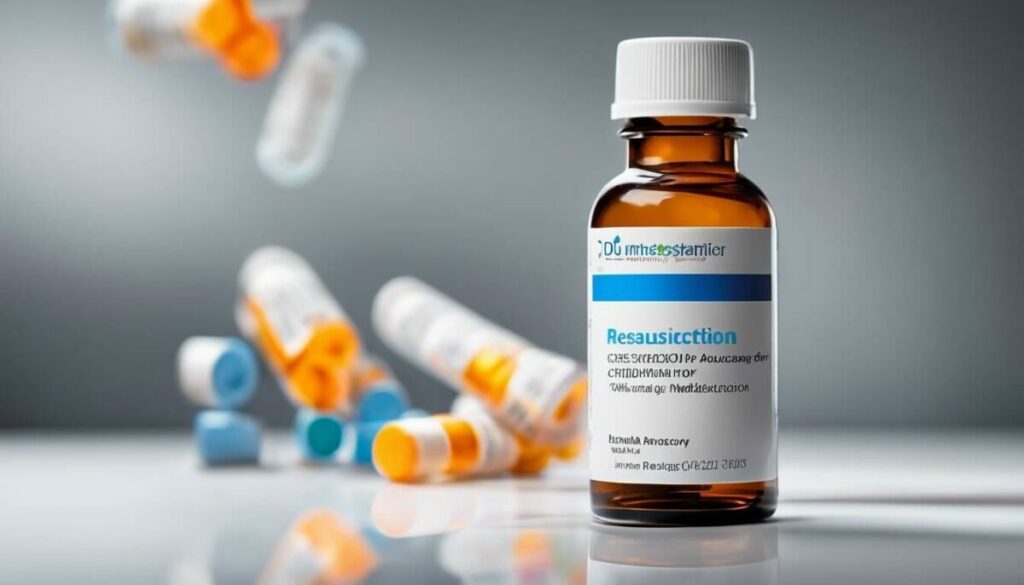Recovery from HCU isn’t a straight path with a fixed timeline. Much like navigating through a city without using the same exact route, the duration varies widely based on factors such as the severity of the condition, treatment methods, and individual’s overall health. Some folks might find themselves on the road to recovery that spans several months, even years – not unlike those long-distance trips where you’re uncertain about when you’ll make it home. Surprisingly, medical studies have indicated that on average, most people can expect to recover in about 6 to 12 months – with some individuals requiring longer durations. This makes it similar to the time it takes for one season to transition into another. Next, we’ll delve into how medical professionals approach this condition.
Recovery from a Google Helpful Content Update can vary, but based on our research and industry observations, it may take several months to see significant improvements in search rankings and organic traffic. Implementing strategic content optimizations, enhancing user experience, and diversifying traffic sources could expedite recovery, but consistent efforts over an extended period are typically necessary for substantial rebound from an HCU impact.

General Length of Recovery From HCU
The recovery period from hypertrophic cardiomyopathy (HCU) varies widely based on several factors, including the severity of the condition, treatment methods, and the individual’s overall health. Just like any other health condition, each person’s journey to recovery is unique, and their response to treatment may vary significantly. It’s important to recognize that the road to full recovery can be lengthy and may require patience and perseverance.
Medical studies have shed light on the average recovery period for individuals with HCU. According to research published in the Journal of the American College of Cardiology, the median time for patients who responded well to treatment was approximately 6 months. This indicates that for some patients, recovery may occur within this timeframe, showcasing a positive outcome for those who are responsive to treatment.
Similarly, another study published in the European Heart Journal highlighted that the recovery period for individuals with HCU can extend up to 12 months or even longer. This elongated recovery timeline is especially pertinent in cases where complications arise or additional interventions are required to manage the condition effectively.
It’s essential to note that recovery isn’t a linear process—it can involve its fair share of ups and downs. Some individuals may experience setbacks or unexpected challenges during their recuperation journey, necessitating further medical attention and lifestyle adjustments.
In navigating the uncertain terrain of HCU recovery, it’s crucial for individuals to remain patient while working in collaboration with healthcare professionals and cultivating a supportive environment. Each person’s response to treatment is unique, and the journey toward complete recuperation may differ significantly across patients.
With an awareness of the diverse paths to recovery from HCU, let’s now proceed to explore how doctors assess and treat this condition.
How Doctors Assess and Treat HCU

When it comes to diagnosing hypertrophic cardiomyopathy (HCU), doctors employ a variety of tests to accurately identify this condition so they can devise the right treatment plan for their patients. One vital test is the echocardiogram, which uses sound waves to create a picture of the heart, providing crucial insight into the thickness of the heart muscle and its functionality.
Genetic testing is another essential tool in identifying HCU. Since HCU can run in families, genetic testing can reveal whether a patient has inherited a gene linked to the condition. This insight is crucial for understanding family risk and providing targeted care.
Consider Sarah, who felt breathless much of the time and discovered her family’s history with heart problems. Her cardiologist recommended genetic testing to check if she carried the gene associated with HCU. The results confirmed her fears but also allowed her siblings and children to undergo testing early, potentially saving them from similar complications in the future.
The use of cardiac MRI is also common in diagnosing HCU. This detailed imaging technique gives doctors a closer look at the structure and function of the heart, helping them confirm any suspicions of HCU.
Once doctors have accurately diagnosed HCU, it’s time to discuss treatment options. The goal of treatment for patients with HCU is to manage symptoms effectively and prevent complications that could arise from the condition. Medication forms a key part of treatment for HCU, helping manage symptoms and prevent potential complications. Lifestyle changes are also crucial – such as avoiding strenuous physical activities and certain medications that might trigger or worsen symptoms.
In some severe cases, medical therapy may not be enough, and that’s where surgical intervention comes into play. Two surgical procedures commonly used are septal myectomy and alcohol septal ablation, aiming to alleviate obstruction in the heart caused by thickened muscle tissue.
Consider James, who struggled with regular daily activities due to severe symptoms of HCU. After exhausting medical therapy options, he underwent septal myectomy, significantly improving his quality of life.
By utilizing these methods of diagnosis and treatment, doctors can provide patients with the best possible care when it comes to managing hypertrophic cardiomyopathy effectively.
The diverse manifestations of HCU present unique challenges that demand tailored approaches for effective management. Let’s now delve into understanding these distinct types of HCU and how they impact individuals’ lives.
Diverse Types of HCU
Understanding the different types of hypertrophic cardiomyopathy (HCU) is crucial, as these variations impact patients differently. Let’s take a closer look at two primary types:
Obstructive HCU
This type of HCU occurs when there is a blockage of blood flow out of the heart, mainly due to thickening of the heart muscle. When blood flow becomes restricted, the individual may experience symptoms such as chest pain, shortness of breath, and fainting. These signs are often associated with physical exertion and occur due to the heart’s decreased ability to supply adequate blood to the body.
It’s like trying to drink from a partially blocked straw. You have to work harder to get the same amount of liquid, and over time this can lead to fatigue and discomfort. This type of HCU requires careful management and treatment to alleviate symptoms and prevent complications.
Non-Obstructive HCU
In non-obstructive HCU, the heart muscle is abnormally thickened, but there is no significant blockage of blood flow. Individuals with this variant may experience symptoms such as arrhythmias (irregular heartbeat), chest discomfort, and fatigue. These symptoms may not be directly related to physical activity and can occur at any time.
It’s important to note that both obstructive and non-obstructive HCU can present with varying severity and may have overlapping symptoms. While obstructive HCU primarily affects blood flow out of the heart, non-obstructive HCU involves abnormalities within the heart muscle itself. The differences in these conditions warrant personalized treatment strategies tailored to each patient’s specific type of HCU.
Understanding the diverse manifestations of HCU is vital for establishing individualized treatment plans. Now, let’s explore the array of factors influencing recovery time for individuals diagnosed with HCU.
Variables Influencing Recovery Time

Recovering from hypertrophic cardiomyopathy (HCU) is a complex and individualized process influenced by a multitude of factors. Understanding these variables can help individuals and their loved ones better navigate the recovery journey, while healthcare professionals can use this knowledge to tailor treatment plans effectively.
Let’s explore some of the key variables that play a significant role in determining the duration of recovery for individuals with HCU.
Age
Age can significantly influence recovery time for individuals with HCU. Generally, younger individuals tend to recover faster due to their overall health and healing abilities. Their bodies are often more resilient and responsive to treatment, allowing for quicker progress in rehabilitation and overall recovery. On the other hand, older individuals might experience a longer recovery period due to potential age-related health challenges and slower healing processes.
Moreover, it’s important to recognize that age-related factors such as co-existing medical conditions and overall physical fitness can also impact the recovery trajectory for individuals at different stages of life.
Disease Severity
The severity of hypertrophic cardiomyopathy, including the extent of blockage or thickening of the heart muscle, significantly impacts the recovery duration. Individuals with more advanced stages of HCU may face a longer and more challenging recovery journey, often requiring comprehensive medical intervention, closely monitored rehabilitation programs, and diligent adherence to treatment protocols.
For instance, severe cases of HCU may necessitate more invasive treatments or surgeries, leading to an extended recovery period characterized by frequent medical evaluations, rehabilitative efforts, and lifestyle adjustments necessary for managing the condition’s impact on daily life.
Strikingly, even within similar disease severity categories, individual differences in response to treatment modalities can further shape the course of recovery. This underscores the importance of personalized care tailored to specific patient needs.
Having examined how age and disease severity influence the recovery process for individuals with HCU, let’s now explore another crucial variable—treatment adherence—and its profound impact on recovery time.
Importance of Nutrition in HCU Recovery

Proper nutrition plays a significant role in the recovery journey of individuals with hypertrophic cardiomyopathy (HCU). A heart-healthy diet is not just a choice; it’s a critical component that can positively impact the healing process. Let’s break down the specific dietary considerations that can make a difference.
First and foremost, the focus should be on consuming a variety of nutrient-dense foods to nurture overall health. Fruits and vegetables, which are packed with essential vitamins, minerals, and antioxidants, are particularly beneficial for individuals in HCU recovery. They not only promote heart health but also aid in strengthening the immune system, crucial for the body’s healing process. Incorporating a colorful assortment of fruits and vegetables into daily meals can provide a range of nutrients required for optimal recovery.
Whole grains, such as brown rice, quinoa, and oats, deliver a substantial amount of fiber and essential nutrients. Lean proteins, including poultry, fish, tofu, and legumes, are pivotal for muscle repair and contribute to overall vitality during the recovery phase.
It’s important to emphasize that consuming a heart-healthy diet isn’t just a temporary measure but should be adopted as a sustainable lifestyle choice.
For instance, limiting the intake of processed foods and saturated fats can help manage cholesterol levels and ease strain on the heart. The adoption of healthier cooking methods like grilling, steaming, or baking, instead of frying, can greatly contribute to lowering saturated fat consumption.
In addition to addressing dietary choices, managing sodium intake is crucial for individuals with HCU. Limiting salt helps in controlling blood pressure and reducing fluid retention, which can alleviate strain on the heart. For those undergoing HCU recovery, monitoring sodium levels in packaged and restaurant-prepared foods is crucial as they often contain high levels of hidden salt.
In summary, making mindful dietary choices centered on heart-healthy foods such as fruits, vegetables, whole grains, and lean proteins can significantly aid in the recovery journey from HCU. By promoting overall health and well-being while minimizing strain on the heart, nutrition becomes an essential factor in optimizing the healing process for individuals with hypertrophic cardiomyopathy.
Now that we’ve explored the pivotal role of nutrition in HCU recovery, let’s turn our attention to another critical aspect—understanding mental strength and its impact on recovery duration.
Mental Strength and Recovery Duration
In the realm of HCU recovery, mental strength and resilience are just as crucial as medical treatment. Coping with a health condition can take an emotional toll, impacting your overall well-being and recovery timeline. It’s vital to recognize the psychological component of recovery and its influence on the duration and quality of the healing process.
Studies have indicated that patients with strong social support and positive coping strategies tend to have better outcomes and shorter recovery periods. This emphasizes the significance of building a robust support system and fostering healthy coping mechanisms during the recovery journey. Counseling, support groups, and maintaining open communication with loved ones can all contribute to a more positive mental state, positively influencing the recovery duration.
Imagine recovery from HCU as a journey that not only involves medical treatments but also encompasses emotional resilience as a critical part of the process. Engaging in activities that promote relaxation, positivity, and mental wellness, such as meditation, mindfulness practices, or engaging in hobbies can effectively support the recovery journey. These activities aren’t just about feeling good—they play an active role in stress reduction and emotional resilience, both pivotal for overall well-being during the recovery phase.
Moreover, adherence to treatment plans and lifestyle modifications is also influenced by mental strength. A positive mindset can lead to better compliance with medical recommendations, resulting in improved physical health. Ultimately, the mental health aspect should not be overlooked when considering HCU recovery. It is an integral factor that contributes to the overall healing process.
Understanding the intersection of mental strength and recovery duration sheds light on the holistic nature of healing from HCU. By actively addressing emotional well-being alongside medical treatment, individuals can navigate their recovery journey with increased resilience and positivity.
With a firm understanding of the critical role of mental strength in HCU recovery, let’s pivot towards exploring essential self-care practices post-HCU to maintain overall well-being.
Caring for Yourself Post-HCU

Recovering from HCU is undoubtedly a tremendous achievement, but it also marks the start of a new phase in your life. Post-recovery, it’s crucial to make lifestyle adjustments that support your continued well-being. As you step into this phase, there are some essential considerations and practices that can significantly contribute to maintaining your health and peace of mind.
First and foremost, after getting the green light from your healthcare provider, it’s important to gradually reintroduce mild to moderate physical activities into your routine. This could include gentle exercises like walking, light yoga, or swimming. However, it’s essential to avoid high-intensity workouts until further advised by your doctor. A gradual increase in physical activity aids in maintaining cardiovascular health and helps in rebuilding strength and endurance.
In addition to engaging in physical activity, regular follow-up appointments with your healthcare providers are vital for ongoing monitoring of your heart function and overall health. These visits provide an opportunity to discuss any concerns or symptoms you may be experiencing and allow your medical team to adjust your treatment plan if necessary. They also play a crucial role in detecting any potential signs of relapse at an early stage.
During these appointments, your healthcare provider may perform tests such as electrocardiograms (ECGs) or echocardiograms to assess the function of your heart, enabling them to identify any abnormalities and take appropriate measures to ensure your continued well-being.
Furthermore, seeking support from family, friends, or patient groups can be immensely beneficial in facilitating a smooth transition back into daily life post-recovery. Let’s explore why having a strong social support system is crucial following HCU recovery.
As you navigate the post-recovery phase of HCU, remember that making steady progress is a combination of physical effort and emotional support. By integrating these aspects into your routine, you can embark on a journey towards holistic healing and well-being.

